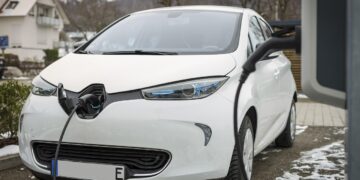Shifting to Solar: A Comprehensive Guide to Transitioning Your Home to Renewable Energy
Making the switch to solar energy represents a significant step towards reducing your carbon footprint and achieving energy independence. This detailed guide aims to provide homeowners with critical insights into the process of transitioning your home to renewable energy, particularly focusing on solar power systems. If you’re considering making the switch, understanding the benefits, costs, and steps involved will help you make an informed decision.
Why Choose Solar Energy?
Solar power offers numerous advantages. Primarily, it is a clean, renewable resource that significantly reduces greenhouse gas emissions, essentially decreasing your environmental impact. Additionally, solar energy can lead to substantial savings on your electricity bills. Over time, the initial investment in solar technology pays off as you save on energy costs, particularly in regions with high electricity rates.
Moreover, solar panels enhance the property value of your home. Studies have shown that homes equipped with solar energy systems have higher property values and sell more quickly than non-solar homes. Homeowners can also benefit from various government incentives, such as tax rebates and grants, which make solar installations more affordable.
Understanding Solar Panel Systems
A solar panel system is typically comprised of solar panels, an inverter, a battery bank for storage, and a monitoring system that tracks electricity production. Solar panels convert sunlight into direct current (DC) electricity. The inverter then converts this DC into alternating current (AC), which is used by home appliances.
The capacity of your solar system will depend on several factors, including your energy needs, the amount of usable sunlight per day, and the surface area available for panel installation. A professional assessment is crucial to determine the appropriate system size that will fulfill your electricity requirements.
Step-by-Step Guide to Going Solar
Evaluate Your Energy Needs
Start by assessing your current electricity usage. Examine your utility bills to determine how much energy you consume on a monthly and annual basis. This step is vital in designing a solar system that meets your specific needs.
Site Assessment
Not every home is suited for a solar installation. Factors such as roof space, orientation, slope, and shading affect the amount and efficiency of solar energy that can be produced. Hiring a professional for a site assessment can help determine if your home is a good candidate for solar panels.
Choose the Right Solar Panels
There are several types of solar panels on the market, including monocrystalline, polycrystalline, and thin-film panels. Each type has its strengths and weaknesses in terms of efficiency, cost, and aesthetic impact. A solar energy expert can help you select the best options based on your home’s architecture and your energy goals.
Financing Your Solar Installation
Solar energy systems can be a significant investment. Fortunately, there are numerous financing options available to homeowners. These include leasing, power purchase agreements (PPAs), solar loans, and outright purchases. Explore the benefits of each to determine which makes the most sense financially for your situation.
Installation and Maintenance
Solar panel installation should always be performed by certified professionals. Once installed, solar systems require minimal maintenance, which generally includes monitoring system performance and periodic cleaning of solar panels to ensure optimal efficiency.
Permits and Paperwork
Navigating the paperwork involved in solar installations can be complex. Local building codes, regional utility rates, and incentive programs all require specific forms and documentation. Many solar providers include handling all necessary permits and applications as part of their services.
Maximizing the Benefits of Solar Panels
To truly capitalize on the investment in solar energy, consider implementing energy efficiency measures throughout your home. Upgrading insulation, using energy-efficient appliances, and adopting smart home technologies can further reduce energy consumption and maximize savings.
Common Questions About Solar Energy
What Happens During Cloudy Days?
While solar panels require sunlight to generate power, modern panels are still effective under overcast conditions. Additionally, excess energy generated on sunny days can be stored in batteries or fed back to the grid, offsetting those less sunny periods.
Is My Roof Suitable for Solar Panels?
This depends on the age, condition, orientation, and material of your roof. Solar professionals perform detailed assessments to ensure your roof is suitable for installation.
How Long Will My Solar Panels Last?
Solar panels are generally very durable and come with a 25 to 30-year warranty. They can continue to produce energy beyond this period, though at a decreased efficiency rate.
Conclusion
Transitioning to solar energy is financially beneficial and environmentally responsible. By understanding the initial costs, energy potential, and systematic steps required, homeowners can effectively plan and execute the shift to solar. With the right setup and maintenance, solar panels can provide significant savings and a cleaner, renewable source of power for decades to come.










